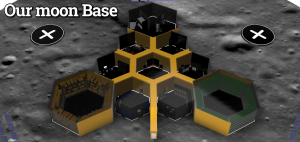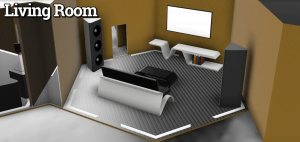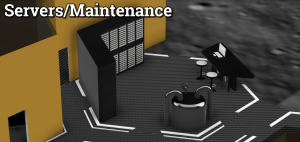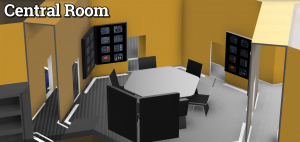Moon Camp Pioneers Gallery 2020-2021
In Moon Camp Pioneers each team’s mission is to 3D design a complete Moon Camp using Fusion 360. They also have to explain how they will use local resources, protect astronauts from the dangerous of space and describe the living and working facilities.
Team: Team Creanga
Ion Creanga National College Bucharest Romania 16, 15, 17
External viewer for 3d project
|
Project description
Our moon camp is designed to be a fully operational outpost on the lunar surface, where scientific explorations and discoveries can be conducted throughout the entire lunar cycle. The base is composed of modular hexagonal rooms, which ultimately will shape up a honey bee with limitless room combinations and with a different design approach than before. The moon camp is specifically designed for housing six astronauts and supporting their normal habits. Each room is prepared with its own equipment and purpose, such as medical or research. This will conclusively lead us a step closer towards space exploration and exploitation, the moon being rich in minerals and metals such as silicon, used in developing solar cells, or Helium-3, which can be used as a fuel. By transporting such materials to earth, we will supply our planet with sustainable sources of energy. |
|||
|
Where do you want to build your Moon Camp?
We would like to build the moon base near the lunar south pole, more precisely on the rim of the Shackleton Crater, since it is a place continuously exposed to sunlight and would therefore provide more benefits for the camp. Being closer to the south pole will save power and supplies needed in explorations, as the distance to travel would be shorter. The temperature changes would be less drastic compared to other moon sites, thing that would be extremely helpful for creating a more natural climate for the astronauts. Thanks to the continuous sun exposure, the base could run almost entirely on solar energy, so we wouldn’t need many batteries to comprehend the energy loss. Moreover, we would have access to one of the largest water sources on the moon, craters full of ice at the very south pole, ice which can be mined and melted in order to obtain drinkable water for the crew. How do you plan to build your Moon Camp? Describe the techniques and materials you would use.
To construct the base, we will use both modular parts and 3D printed ones. Shortly after the landing, the astronauts will temporarily settle in an inflatable tent, while a small rover begins to scan the environment for imperfections and obstacles, sending all files to the 3D printer for processing and then beginning construction. The floors will be made out of six carbon composite triangles, due to its high temperature tolerance and light weightness. They will be mounted together forming the hexagonal structure. All the rooms are illuminated by six LEDs, one on each corner, and are connected by a system of hallways, shaped to go in between the hexagons. After establishing a solid foundation, we will start 3D printing rectangular walls made of titanium, to assure strength and protection for the base. Afterwards, there will be a metallic coating applied to all the inside walls in the base, to provide extra protection against solar radiations. This structure easily allows sealing one room or adding as manny rooms as necessary. The environment on the Moon is very dangerous for the astronauts. Explain how your Moon Camp will protect them.
The most challenging factors the spacemen will have to overcome are: space radiations and mini meteorites, gravity. Yet, they will also be subjected to behavioural risks. From external dangers, while traveling to the moon, astronauts can use the cargo around them as a protective shield against radiations, and the greater its mass, the greater protection will be. Upon their arrival on the moon, they’ll stay in an inflatable tent, covered by a layer of protective lunar soil, while in the meantime the 3D print-robot will be building the base. In order for the base to be safe, we planned it with thick walls. For protection against high temperatures, we can use heat shield tiles, made of silica fibers. To maintain the crew’s mental health, they will stay in close contact with family and friends and they will also be allowed to bring 0.5kg of their belongings to feel more at home. At their disposal will be a gym and a relaxation zone inside the base, which will allow them to maintain socialization skills and wellbeing, which are extremely important in the long run. Explain how your Moon Camp will provide the astronauts with:
|
|||
|
Water
|
Food
|
Electricity
|
Air
|
|
Numerous rapports have pointed out that water exists at the lunar poles in the form of ice, and since we positioned the base near the Shackleton Crater, we will be able access the southern region source. The ice will be mined and transported back to the base, where it will be put in a container outside and left to be melted by the solar energy. Once melted, the water will start flowing through a system of underground pipes and ultimately into a pumping system in the base. Moreover, we want to recycle the water from the air and urine, thus creating a closed system. |
At first, the astronauts will have to eat from their supplies brought along from Earth. The rest of the food will be grown in hydroponic bays, directly inside the moon base, providing the astronauts with a partially plant-based diet within the next month or two. By then, we will be having fully grown plants (like broccoli, leafy greens, brussels sprouts, beans, sweet potatoes and more), because of their nutritional benefits. To diversify their options, astronauts will have a food 3D printer at their disposal, which can cook all kinds of dishes. The crew members will be examined by nutritionists to determine their metabolic characteristics which would allow for the utilisation of an optimal dietary plan which would cut back on unnecessary food consumption. |
Our main source of energy will come from highly efficient solar panels. Thanks to the almost constant solar radiations near the Shackleton Crater, we will not need other sources of power during the day. However, at night, we will need to use batteries to overcome the inactive solar panels. One of the solutions is to use hydrogen fuel cells. We will get the hydrogen from the water’s electrolysis process, which results in O2 and H2. An alternative to this would be to burn methane for energy. Methane can be obtained from the Sabatier Reaction, which turns CO2 and H2 into water and methane. |
Firstly, oxygen can be obtained from water’s electrolysis, which can be combined with nitrogen to establish breathable air (21% O2, 78% N2) for the astronauts inside the base. The remaining oxygen will be stored in pressurized containers for astronauts to breathe during their expeditions in space. Oxygen can also be acquired from the moon’s surface, which is 43% O2, utilizing the Molten Salt electrolysis. So far, there has not been evidence of nitrogen being found in huge quantities on the lunar surface, so we will have to use compressed nitrogen sent from Earth, unless newer discoveries point to the contrary |
|
Explain what would be the main purpose of your Moon Camp (for example: commercial, scientific, and/or tourist purposes).
The main purpose of our moon camp would be a scientific one. By settling crew on the lunar surface, we hope to conduct multiple scientific explorations and experiments in order to better understand the environment, thus enabling us to build better and more powerful space efficient bases for future missions, generations or even for commercial traveling. However, a third of the base’s crew will consist of tourists, which will help us fund the expeditions and other necessities. Some of the scientific research might consist of learning the effects of microgravity on living organisms, or better understanding the moon’s geology and composition. Researchers have pointed out that the lunar soil is fertile. If that is accurate, it might open the door to developing new compounds. Finally, mining the moon’s surface would lead us a step closer to further space exploration and exploitation, which is beneficial for Earth, as we all know that our planet’s resources are finite. |
|||
|
Describe a day on the Moon for your Moon Camp astronaut crew.
The astronauts will work in three shifts, each composed of two individuals, so that at any given time, there will always be two members of the crew awake, in case of an emergency. An artificial day and night cycle will be created to maintain the custom circadian rhythms of each one of the shifts. Firstly, after waking up, the crew can use the bathroom facilities and have their usual morning routine. After that, they can go grab some breakfast (made in the food 3D printer), either from the hydroponic bays or the kitchen. If they prefer, the spacemen can do some workouts in the gym, run on the treadmill, lift weights, ride a bicycle, or even do some yoga in the sports room. Following their morning routines, the crew members have to check the machineries and systems throughout the entire base to ensure that everything is working properly and that no systems are critical. If a component or part of a machine is damaged, it will be taken down to engineering, where the engineers will take care of it. If a piece happens to be beyond repair, new pieces will be 3D printed as fast as necessary. Each member of the crew has been given specific tasks to do throughout the day. The botanists will run the hydroponic bays to ensure the crew members have enough food to eat; the engineers’ main tasks might be to repair and sustain working systems or to analyse and design new components. If the outside temperature is within the survival range, the astronauts can go on different expeditions. Some of them might consist of drilling ice from the south pole then filling the water chamber outside the base with it, or retrieving different rocks, ores, or specimens from the moon’s surface. The crew will also do research to increase our understanding of the moon, such as its geology or the effects of microgravity upon living organisms. Both expeditions and researchers can help us in better understanding the environment, thus developing sustainable future bases. After they have finished their tasks, the crew members have some free time to relax, play some games, listen to music, watch a movie, or call their friends and families. Before going to bed, they will have to eat dinner and maybe use the bathroom facilities as they wish and have a look at our Earth, in the distance. |
|||














